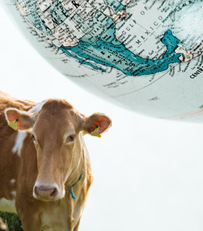Food and Food Security
A selection of activities related to food waste, food production and climate change.
Food security lesson plans
Most suitable for school students aged 14+
These resources were developed in partnership with BBSRC’s Global Food Security initiative. They include Key Stage 4/ S4 biology resources related to the carbon cycle, food production and food waste and Key Stage 3/ S3 geography resources related to environmental and social impacts of global food production. There is also a food waste related assembly plan.
Biology carbon cycle worksheet with answers
Biology carbon worksheet
Biology food security quiz
Biology lesson presentation PowerPoint
Biology lesson presentation PDF
Biology and numeracy worksheet
Geography teachers’ notes
Geography lesson presentation PowerPoint
Geography lesson presentation PDF
Geography summary worksheet – fill in the gaps
Geography homework worksheet
Geography homework worksheet with answers
Food waste assembly
The Hungry Games
Most suitable for ages 17+
These resources were developed by the Royal Society of Biology and the Biochemical Society for use at festivals with diverse audiences. The card game has four decks of cards, with each deck focusing on one nutrient group. Further information on how to play it below. You can also download the A5 fact sheet.
How to play the card game
There are four decks of cards – carbohydrates, fats, proteins, vitamins & minerals.
By playing each card game, visitors will learn in detail about different foods and their nutrient content. They will also find out about the environmental impact of the foods in these rounds.
The scoring for the card game is based on the top trumps game, and uses the traffic light system used for food labelling in the UK.
Red traffic light (lowest score) Foods that contain a high amount of something considered bad for our health (e.g. Saturated fat, sugar), foods containing low amounts of things good for our health (e.g. Fibre, essential fats) and foods with a negative environmental impact.
Orange traffic light (medium score, beats red) Foods with a medium score will have an orange traffic light, and will beat foods with a red score.
Green traffic light (highest score, beats orange and red) Foods high in nutrients that are good for us (e.g. Essential fats, fibre, protein), foods with a low environmental impact and foods low in nutrients bad for our health (e.g. Saturated fat).


